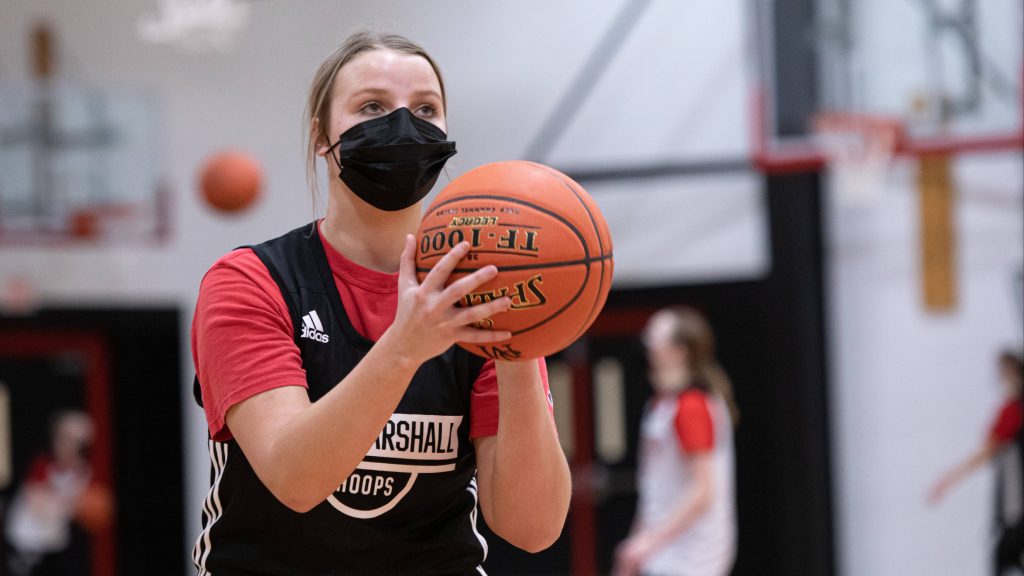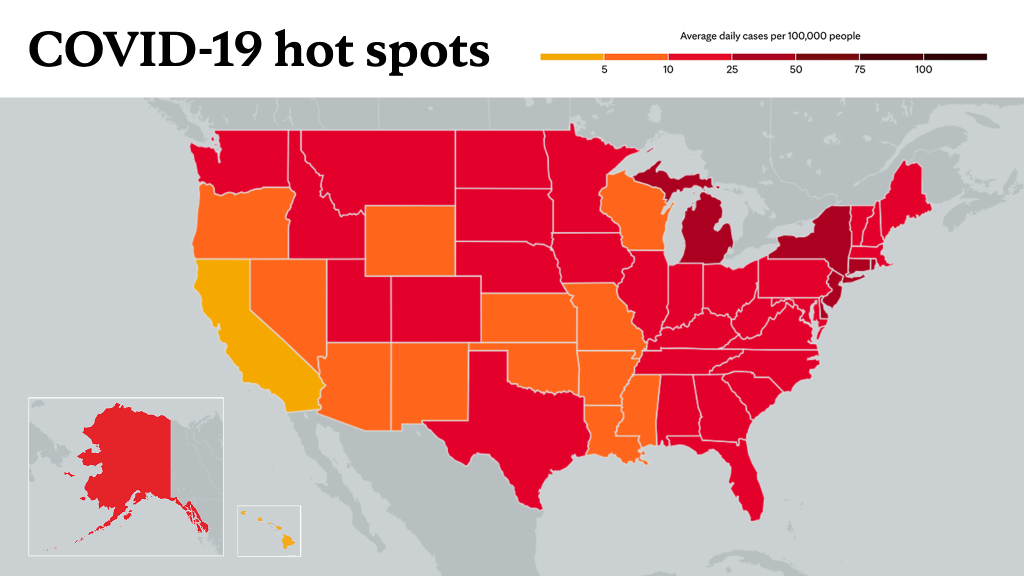
Besides the obvious physical benefits, youth sports provide social interaction that also provides a degree of mental health. Since most sports require getting up close and personal with other athletes, the COVID-19 pandemic has created some challenges.
"Initially, there was a fear of transmission of COVID-19 among athletes, especially with the contact sports. That is why a lot of these sports were canceled or postponed. But fortunately, we have not seen a rapid spread amongst contact sports," says Dr. Jennifer Maynard, a sports and family physician at Mayo Clinic.
According to Dr. Maynard, as the pandemic has gone on, statistics indicate that sports are not the issue. Rather, data indicate the spread of COVID-19 among athletes occurs not during sports participation, but from social contact, she says. And the rate of infection is proportional to the community rate.
"It's the environment of the athletes, both on and off the court or the field that makes the biggest difference, not the actual sport. Most local outbreaks are due to contact in the locker room or on the sidelines or from other social engagements outside of the sport itself," she explains.
Watch: Dr. Jennifer Maynard - National Guidelines for sports & COVID-19 risk.
Journalists: Broadcast-quality sound bites with Dr. Maynard are available in the downloads at the end of the post. Please courtesy:
"Jennifer Maynard, M.D. / Family Medicine / Mayo Clinic"
Recently, the National Federation of State High School Associations released a statement, revising its earlier “statement on risk of COVID-19 during high school sports." The biggest change is that the federation eliminated its tiered system that ranked the risk of infection by sport, says Dr. Maynard. The group instead shared findings that showed athletes playing contact sports and indoor sports are at a higher risk of illness when compared to noncontact sports or outdoor sports.
But certain factors can mitigate risk. "For instance, indoor sports can be similar risk to outdoor if you use a mask, for example, with basketball or volleyball,' says Dr. Maynard.
"The general consensus is that there are many more positives than drawbacks in getting athletes back engaged. For one, there's plenty of data that show those who do athletics do better in their school life and their home life. They succeed in future jobs and leadership roles. We absolutely want to get our athletes back to play as fast as possible but as safe as possible for the benefits of both their physical and mental health."
Her top tips to parents, coaches, athletic trainers – and students themselves:
- Stay on guard and continue with social distancing.
- Universally wear a mask, especially in social situations where you cannot physically distance.
- Practice proper hand hygiene and stay home when you're sick.
"Lead by example to make sure we are able to continue to lower the rates of COVID-19," says Dr. Maynard.
____________________________________________
For the safety of its patients, staff and visitors, Mayo Clinic has strict masking policies in place. Anyone shown without a mask was either recorded prior to COVID-19 or recorded in a nonpatient care area where social distancing and other safety protocols were followed.
Information in this post was accurate at the time of its posting. Due to the fluid nature of the COVID-19 pandemic, scientific understanding, along with guidelines and recommendations, may have changed since the original publication date.
For more information and all your COVID-19 coverage, go to the Mayo Clinic News Network and mayoclinic.org.
Learn more about tracking COVID-19 and COVID-19 trends.








